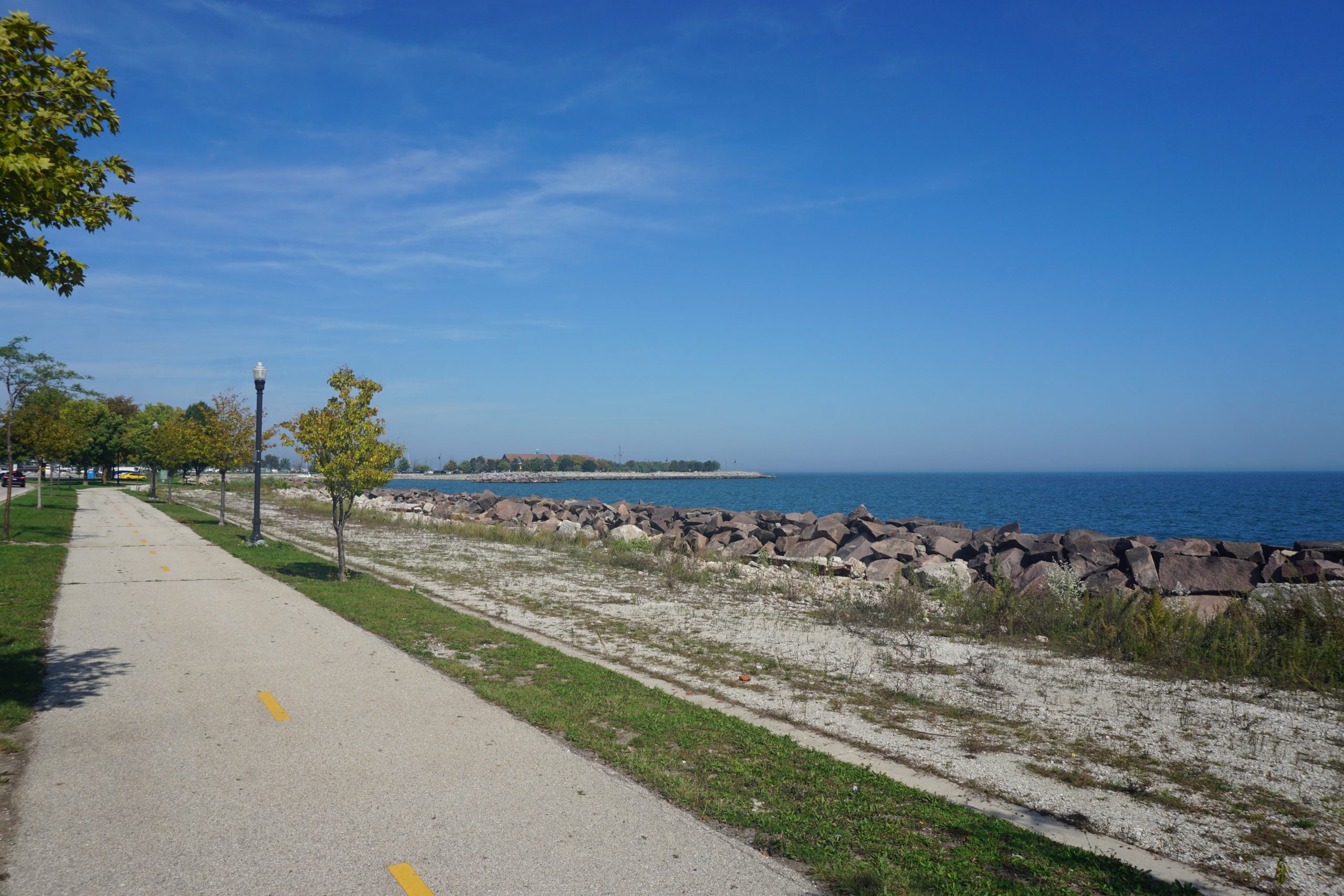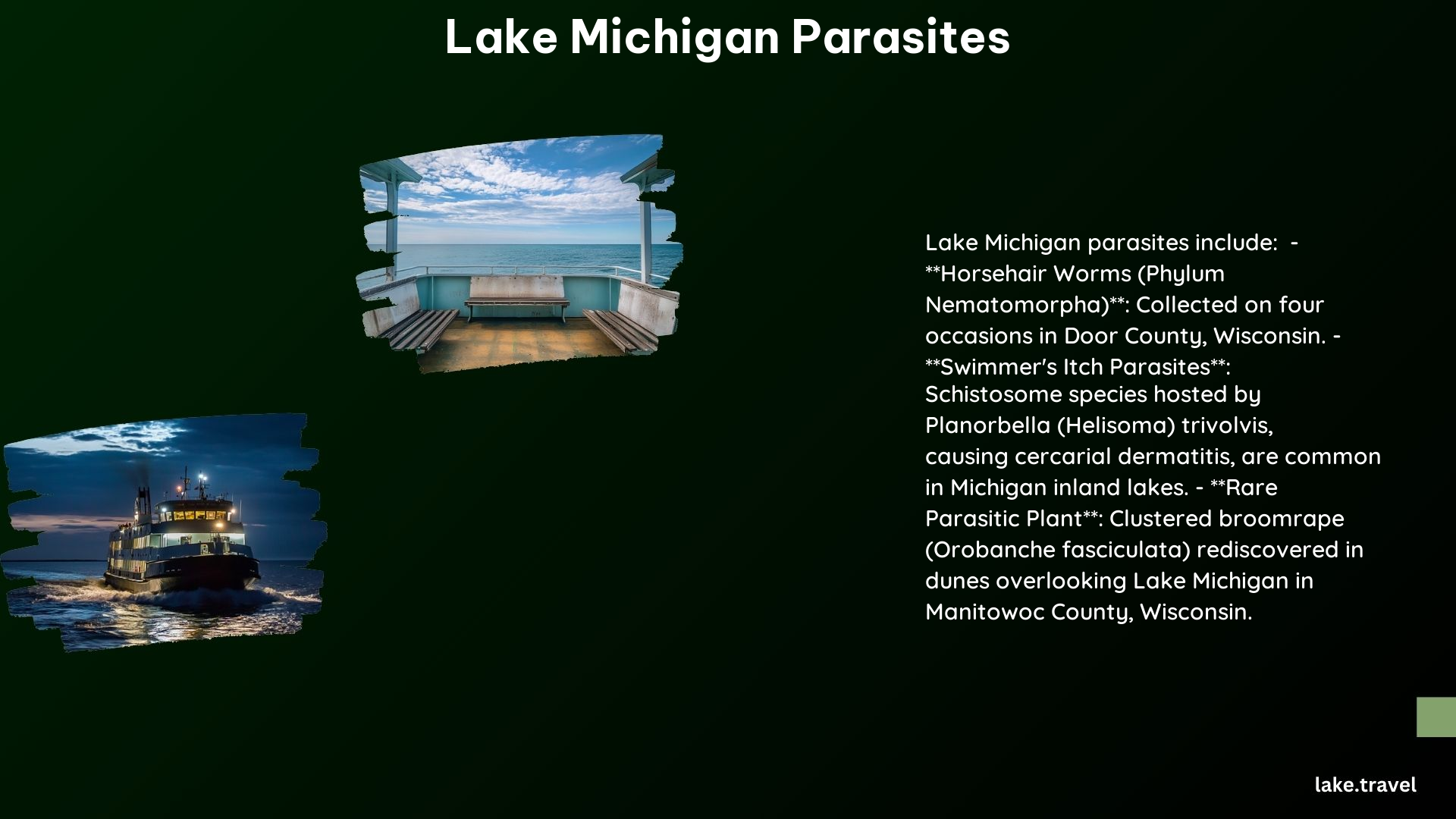Lake Michigan is a vast and captivating body of water that attracts millions of visitors each year. However, beneath the surface, there lurks a diverse array of parasites that can affect both fish and humans. In this comprehensive blog post, we’ll delve into the common parasite species found in Lake Michigan and explore how they can impact those who enjoy the lake’s waters.
Common Parasite Species in Fish from Lake Michigan

Lake Michigan is home to a variety of parasitic organisms that can infect the local fish population. Two of the most notable species are:
-
Horsehair Worms (Phylum Nematomorpha): These long, slender worms, specifically Gordius robustus, have been found in Lake Michigan, particularly in the Door County region of Wisconsin. These parasites can infect a wide range of aquatic organisms, including insects, crustaceans, and even fish.
-
Schistosomes: These parasitic flatworms are known to cause swimmer’s itch, a skin condition that can be a nuisance for those who enjoy swimming in Lake Michigan. The schistosomes typically target smaller lakes, but they can also be present in larger bodies of water like Lake Michigan.
How Parasites Affect Humans Swimming in Lake Michigan

While the parasites found in Lake Michigan primarily target fish, they can also have an impact on human health and enjoyment of the lake.
Swimmer’s Itch
One of the most common issues associated with Lake Michigan parasites is swimmer’s itch. This condition is caused by the schistosome parasites, which can penetrate human skin and cause small, itchy bumps or rashes. The symptoms of swimmer’s itch are typically mild and can be treated with over-the-counter anti-itch creams or medications.
Precautions to Avoid Swimmer’s Itch
To minimize the risk of contracting swimmer’s itch while swimming in Lake Michigan, it’s important to take the following precautions:
- Check with local public health officials for any warnings or advisories regarding swimmer’s itch in the area.
- Apply waterproof sunscreen or baby oil before entering the water, as this can create a barrier that helps prevent the parasites from penetrating the skin.
- Dry off thoroughly with a towel immediately after swimming, as this can help remove any parasites that may have attached to the skin.
- Avoid feeding ducks or geese, as their droppings can reintroduce the parasites into the water.
- Be cautious in areas with warmer water and winds, as these conditions can concentrate the snails and parasites near the shoreline.
Additional Parasitic Threats in Lake Michigan
While the primary focus of this article has been on the parasites that affect fish and swimmers, there are a few other notable parasitic organisms found in the Lake Michigan ecosystem.
Rare Parasitic Plant
One such example is the clustered broomrape (Orobanche fasciculata), a rare parasitic plant that has been rediscovered in the dunes overlooking Lake Michigan in Manitowoc County, Wisconsin. This plant is a unique and fascinating addition to the lake’s diverse ecosystem.
Volunteer Monitoring Programs
To help protect and monitor the rare and threatened species found in and around Lake Michigan, the Wisconsin Department of Natural Resources has established a Rare Plant Monitoring Program. This program trains volunteers to identify and track the populations of these species, including the parasitic clustered broomrape.
Research and Mitigation Efforts
Ongoing research and mitigation efforts are crucial for understanding and addressing the impact of parasites in Lake Michigan. Studies have been conducted to identify and mitigate the effects of parasites, such as the discovery of a novel schistosome species hosted by the snail Planorbella (Helisoma) trivolvis.
By staying informed about the common parasites found in Lake Michigan and taking appropriate precautions, visitors can continue to enjoy the lake’s beauty and recreational opportunities while minimizing the risks associated with these aquatic threats.
References
- https://dnr.wisconsin.gov/newsroom/release/74866
- https://www.washtenaw.org/1606/Swimmers-Itch-Information
- https://www.mibluesperspectives.com/stories/health-and-wellness/avoid-swimmers-itch-this-summer-in-michigan-lakes
- https://www.ncbi.nlm.nih.gov/pmc/articles/PMC10090624/
- https://www.sciencedirect.com/science/article/pii/S0380133090714402
